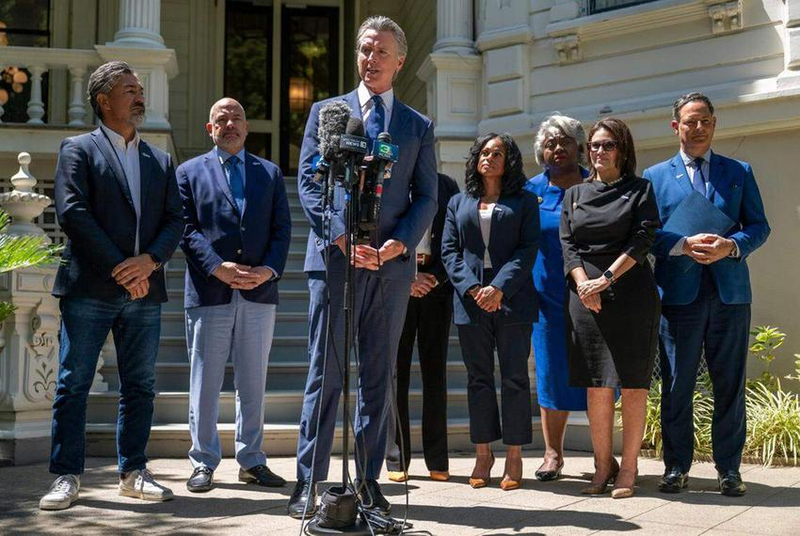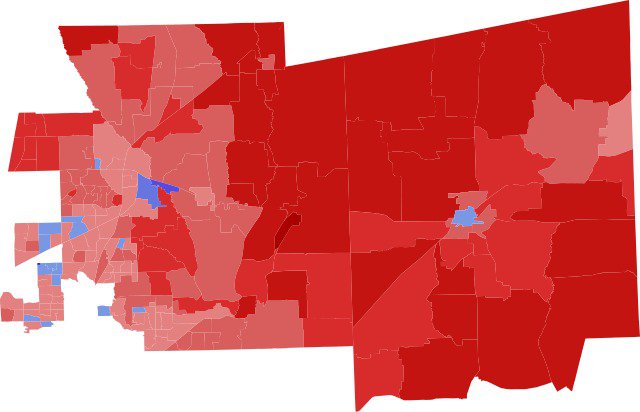
The FBI joined the effort to track down Democrat members of the Texas House of Representatives who fled the state in an attempt to thwart the Texas Legislature’s congressional redistricting efforts.
This followed a letter sent Tuesday by Texas Sen. John Cornyn to the FBI asking for assistance. When asked whether the FBI should get involved, President Donald Trump responded, “Well, they may have to. They may have to.”
House Democrats began to flee the state on Sunday, after lawmakers took the first formal vote on a mid-census redistricting plan last Friday night. The vote advanced the redistricting bill, House Bill 4, out of committee on a 12-to-6 party-line vote after nearly 12 hours of testimony from members of Congress and the public.
The bill, filed by Rep. Todd Hunter of Corpus Christi, redraws 37 of the state’s 38 U.S. House districts. The five seats that are likely to change from Democrat to Republican are ones that Donald Trump carried by at least ten points in 2024. If enacted, Republicans could hold as many as 30 of Texas’ 38 congressional seats in the 2026 mid-term elections.

Democrats whose districts would be reworked argued that the proposal is racially motivated. Houston Democrat Sylvia Garcia said her Hispanic citizen voting-age share would drop from 63 percent to 43 percent: “If 20 percent down isn’t dilution, then what is?”
Dallas Rep. Jasmine Crockett complained, “This map is so terrible. The two new black seats that they telling us that they gave us. They're like, be happy we gave you some scraps.”
Rep. Greg Casar echoed a common theme among some of the Democrats, trying to blame President Trump for the new district maps. “It's clear to me that these maps aren't drawn by anybody from Texas. It is you on the dais job to draw Texas's maps. It's clear that somebody in Mar-a-Lago drew these maps.”
As Hunter laid out his bill, he made an effort to show the Republicans were on solid ground in redrawing the maps, explaining “You can draw districts based on political performance, political partisanship that's recognized by the United States Supreme Court. These districts were drawn primarily using political performance criteria from the US Supreme Court.”
Hunter also told members the changes reflect population growth as well as recent voting trends and “allow Republican candidates the opportunity to compete” in areas where the party has been gaining ground among Hispanic voters.
Republicans also pointed to recent court rulings supporting their approach. The Fifth Circuit’s 2024 Petteway decision said “coalition” districts that combine different minority groups are not required under the Voting Rights Act. Gov. Greg Abbott placed redistricting on the session call after the U.S. Department of Justice alleged that current maps improperly grouped minority voters; Hunter said HB 4 addresses the DOJ’s concerns while staying “completely transparent and lawful.”
Agree or disagree with him, Chairman Todd Hunter is one of the best framers in the Texas House.
— Luke Macias (@lukemaciastx) August 1, 2025
Chairman Vasut was smart to pick him to carry this vital legislation. pic.twitter.com/WF81JevNoK
Under HB 4, four of the five newly configured districts are majority-Hispanic, and the plan would create Texas’s first two majority-Black congressional seats—Houston’s District 18 and Dallas’ District 30—both just over the 50 percent Black citizen voting-age threshold.
Texas Democrat State Rep. Christian Manuel, a member of the House’s redistricting committee, doesn’t think much of the Republican arguments. “One thing that we know historically has always been done is to pit minorities against each other and make them to fight over scraps,” he said. He also suggested that somehow the redistricting effort would result in “taking economic engines from black people or Hispanic people.”
With many Democrats spread across the country in Democrat strongholds like California, Illinois, and Massachusetts, the Texas House is operating without the required constitutional quorum of at least 100 members so it cannot consider any legislation. However, the Texas Constitution allows the members left to put a call on members who are absent, requiring them to return.
The Texas House did that on Monday, issuing civil arrest warrants for members that empowers the House sergeant-at-arms and state troopers to arrest and bring them to the Capitol.
This authority only extends to Texas’s borders, however, which is what makes the involvement of the FBI notable. According to Sen. Cornyn, the “FBI [will] assist state and local law enforcement in locating runaway Texas House Democrats.” However, nothing has been said about whether the FBI will also assist Texas in detaining the runaway Democrats.
Several commentators have noted the hypocrisy of the Texas Democrats on display by the choice of states they are visiting as they flee from Texas.
Texas Rep. Brian Harrison, a Republican, noted, “In California, Republicans make up 40% of the vote; they get 17% of the seats. They never talk about this when the Democrats do this. Connecticut? Republicans are 38%, they get zero seats. New York? Forty-two percent of the vote is Republican; they get 26% of the seats.”
Massachusetts Governor Healey is threatening to redistrict her state in response to what's happening in Texas.
— DeVory Darkins (@devorydarkins) August 6, 2025
The only problem? There hasn't been a Republican in the Massachusetts House in 31 years 😂
"Donald Trump, Greg Abbott, Ken Paxton have left us no choice. That’s the… pic.twitter.com/kv29ET2Wlr
This is not the first time Democrats have attempted to thwart Texas Republicans efforts related to voting. In 2003, they fled the state twice - once to Oklahoma and once to New Mexico - to block a similar mid-census redistricting bill after Republicans had gained majorities in both houses of the Texas Legislature for the first time since Reconstruction. In 2021, they left the House floor before a midnight deadline to kill voter integrity legislation and then later that year to travelled to Washington, D.C. to do them same thing. In both years, their efforts were ultimately unsuccessful.